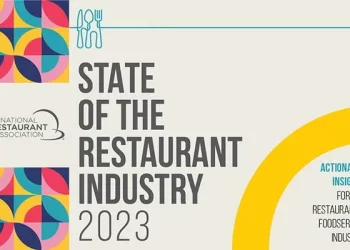
In keeping with the National Restaurant Association, uncertainty on tariffs continues to loom, regardless of a brand new settlement to scale back U.S. levies on Chinese language items to 30% throughout the subsequent 90 days. As a part of the deal, Chinese language levies on American items would drop to 10%.
Canada and Mexico have been largely exempted from the imposition of tariffs, nevertheless, the 30% tariff on Chinese language items will create challenges for restaurant operators to deal with, business consultants contend.
Eating places depend on China for a lot of of their key inputs, together with meals components, plastic packaging and utensils, and gear. The affect of the tariffs on items from China and different international locations will result in elevated prices and provide chain disruptions, says Invoice Lapp, president of Omaha, Neb.-based Superior Financial Options.
“The info present restricted tariff impacts so far, and any dramatic impacts nonetheless lie forward,” the commodities analyst says.
Larger costs stay on the menu
A ten% base world tariff is in place by way of early July, after which a tougher schedule might be applied–21% for contemporary tomatoes imported from Mexico; a tariff of greater than 40% on shrimp from Vietnam; and occasional merchandise from all over the world. A return to those greater charges might stress operator margins as a result of elevated meals prices.
Lapp advises operators, particularly smaller and impartial ones, to proceed searching for methods to mitigate the impacts of upper pricing and attainable shortages by:
• Carefully managing provide chains
• Discovering various sourcing choices
• Re-engineering menus to incorporate extra inexpensive components
“Watch your inventories intently and preserve a good relationship together with your suppliers,” he says. “Given the tariff uncertainty, it’s in all probability a good suggestion to research different attainable sources for provides and components that assist preserve clean operations.
“Dynamic modifications at eating places and retail operations nonetheless stay,” Lapp continues, “and enterprise operators must be much more artistic and progressive to cope with these challenges.”







